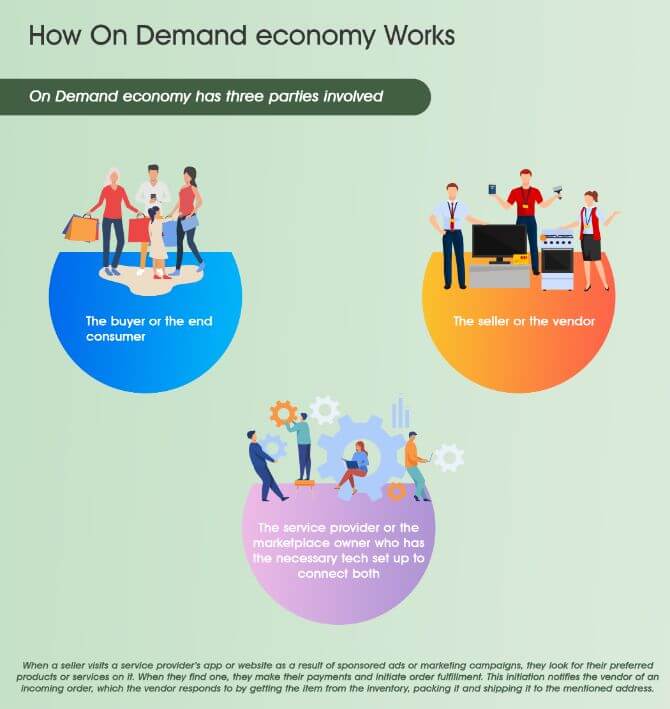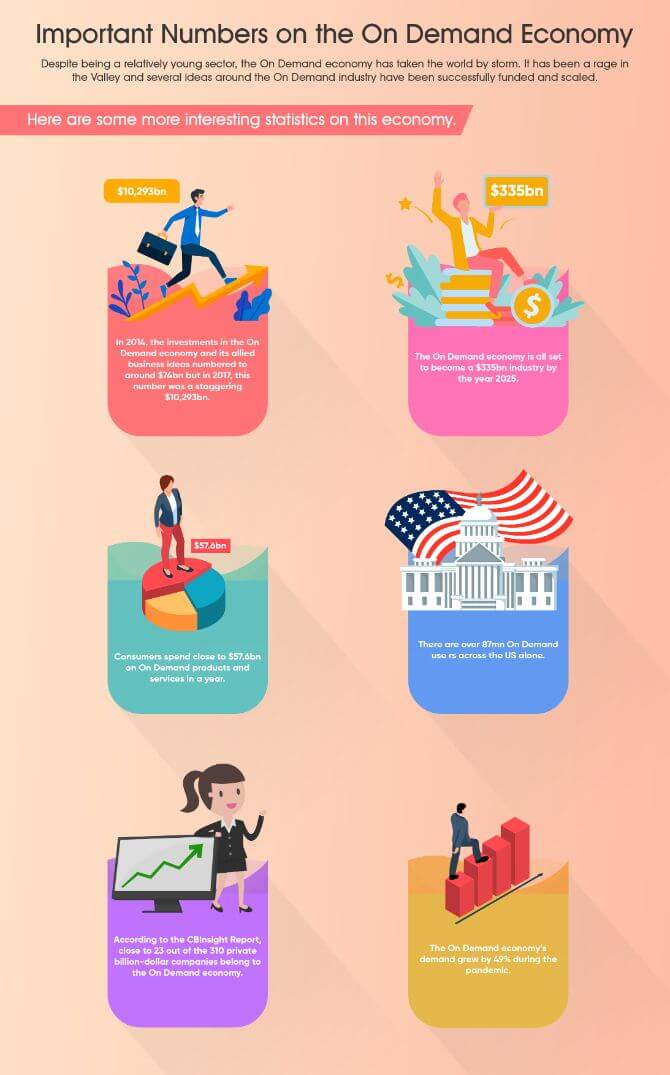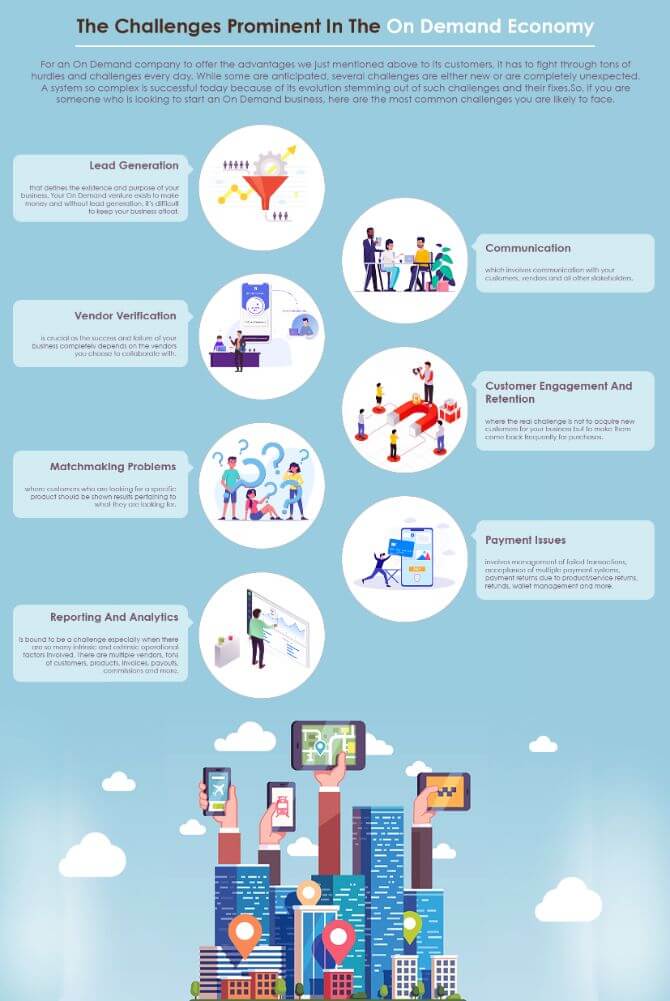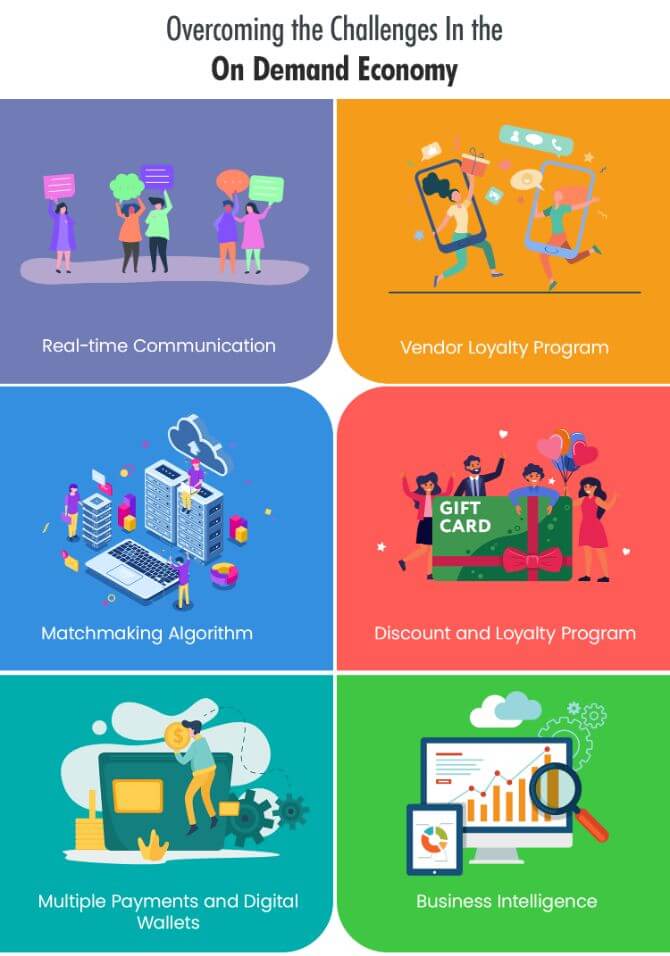-
solutinos
-
Hire
Frontend Developer
Backend Developer
-
NodeJS Developer
-
Java Developer
-
Django Developer
-
Spring Boot Developer
-
Python Developer
-
Golang Developer
-
Ruby on Rails Developer
-
Laravel Developer
-
.NET Developer
Technology
-
Flutter Developer
-
React Native Developer
-
Xamarin Developer
-
Kotlin Developer
-
Cross-Platform Developer
-
Swift Developer
-
MongoDB Developer
-
C Developer
-
Smart Contract Developers
Cloud
-
-
Services
Mobile Development
Web Development
- Work
-
Multi Services App
-
Food Delivery App
-
Grocery Delivery App
-
Taxi Cab Booking App
-
Multi Services App
-
OTT Platform APP
-
Social Media APP
-
Freelance Service App
-
Car Rental App
-
Medicine Delivery App
-
Liquor Delivery App
-
Sports Betting App
-
Online Coupon App
-
eLearning App
-
Logistics & Transportation App
-
Courier Delivery App
-
On-Demand Real Estate App
-
E-Wallet APP
-
Online Dating App
-
Handyman Services App
-
-
Process
-
Company
The On Demand economy is perhaps the hottest business model nowadays. From the last television series you watched on Netflix to something you ordered for lunch today, everything is On Demand. The growth of the On Demand economy has been of recent origin, fueled mainly by the deeper market penetration of the internet and smartphones.
As less expensive smartphones were made available in the market and the price of mobile internet became more affordable, businesses and companies saw an amazing outlet out there to capitalize on – the human mind’s need for convenience. As humans, we have always wanted technology to make our lives easier and bring in much needed convenience. With smartphones and the internet, this happened at dynamic rates.
The need for this convenience and the right tools and technologies available today have given birth to what we call – the On Demand economy, where we order whatever we want today from wherever we are.
Hello and welcome to another post on our Retail and Ecommerce Guide series, where we discuss some of the most prominent business models in the market so you could choose the most ideal one for your business. In our last post, we had an extensive look on what online marketplaces are, their types, their distinct challenges and solutions and their future.
In this post, we will shed light on the On Demand economy and everything you need to know about this business model. By the end of the post, you will know what this business model is all about and how you could leverage its full potential to grow your business.
Let’s get started.
What Is The On Demand Economy?
An On Demand economy is where you order for your preferred product or service from a marketplace or an aggregator and get it delivered to your home, device or any other medium/place.
From something as simple as pizza delivery to a full-fledged program on artificial intelligence, you could learn, consume, utilize and do more in an On Demand economy.
Not just products such as food and beverages, apparel and groceries, the On Demand economy is shaping every other industry it touches today. Any product or service that is meant just for you at one particular point of time can be On Demand. To comprehensively understand what the umbrella term On Demand economy includes, let’s look at the list below.
On Demand Services
.jpg)
This is where consumers use a marketplace to access certain services that will allow them to accomplish something or solve their problems.
- Delivery – goods, groceries or food
- Transportation – Uber, Lyft and more
- Hospitality and Accommodation – AirBnB
- Education – videos, professional courses, vocation courses and more
- Healthcare – medicines, doctors on call, virtual consultations and more
- Fitness and Beauty – On Demand personal trainers, make up professionals, nutritionists and more
- Home Service – plumbers, mechanics, service associates, pest control and more
- Rental services – car rental, laptop rental, console rentals and more
- Entertainment – videos, television series, music, movies and more
- Emergency Service Marketplace – volunteers, crisis management companies, private detectives and more
On Demand Products
- Print On Demand – on clothing and apparel, tech accessories, wall art and home decors, personalized gifts, stationary, books and more
- Clothing and apparel
- Health and beauty
- Toys and baby products
- Books, DVDs
- Gadgets and electronics
- Electrical appliances
- Stationary
- Jewelry
- Sports and outdoors
- Gifts and flowers and more

How It Works
Generally, an On Demand economy has three parties involved –
- The buyer or the end consumer
- The seller or the vendor
- The service provider or the marketplace owner who has the necessary tech set up to connect both
When a seller visits a service provider’s app or website as a result of sponsored ads or marketing campaigns, they look for their preferred products or services on it. When they find one, they make their payments and initiate order fulfillment. This initiation notifies the vendor of an incoming order, which the vendor responds to by getting the item from the inventory, packing it and shipping it to the mentioned address.
When an order is fulfilled, the consumer leaves a rating or review for the service provided. The cycle is triggered again in another instance.

Important Numbers on the On Demand Economy
Despite being a relatively young sector, the On Demand economy has taken the world by storm. It has been a rage in the Valley and several ideas around the On Demand industry have been successfully funded and scaled.
Here are some more interesting statistics on this economy.
- In 2014, the investments in the On Demand economy and its allied business ideas numbered to around $74bn but in 2017, this number was a staggering $10,293bn.
- The On Demand economy is all set to become a $335bn industry by the year 2025.
- According to the CBInsight Report, close to 23 out of the 310 private billion-dollar companies belong to the On Demand economy.
- Consumers spend close to $57.6bn on On Demand products and services in a year.
- There are over 87mn On Demand use rs across the US alone.
- The On Demand economy’s demand grew by 49% during the pandemic.
The Advantages Of the On Demand Economy
.jpg)
It’s a giveaway that an On Demand economy is highly advantageous to consumers, business owners and vendors. By now, we are sure most of us would have already witnessed the convenience of On Demand products and services.
With the onset of the pandemic, consumer behavior experienced a dynamic shift recently with several conventional buyers and shoppers preferring online shopping over in-store shopping. From people who were reluctant to shop online and elderly people to those who were selective users of the On Demand economy turned to this market for full-fledged utilization.
This definitely shows what the economy has to offer to its consumers.
To have a clear idea of the advantages the On Demand economy offers, let’s look at them one by one.
- They offer the highest standards of comfort and convenience
- They allow customers to explore options right from wherever they are and have an exhaustive inventory before them to shop around.
- Modifying or cancelling an order is relatively simple.
- Refunds and return policies are airtight.
- Vendors who would find it difficult to generate leads otherwise have the opportunity to make way for optimized sales through On Demand economies.
- Personalization of services and products is possible.
- Accurate targeting and implementation of recommendation engines to understand consumer behavior is possible.
- Everyone involved in the On Demand economy gets money’s worth of experience.

The Challenges Prominent In The On Demand Economy
For an On Demand company to offer the advantages we just mentioned above to its customers, it has to fight through tons of hurdles and challenges every day. While some are anticipated, several challenges are either new or are completely unexpected. A system so complex is successful today because of its evolution stemming out of such challenges and their fixes.
So, if you are someone who is looking to start an On Demand business, here are the most common challenges you are likely to face.
Lead Generation : that defines the existence and purpose of your business. Your On Demand venture exists to make money and without lead generation, it’s difficult to keep your business afloat.
Real-world Scenario : Lead generation is a crucial phase in your business where a lot of intricate layers such as CRM integration, cart abandonment details, push notifications and more come into the picture to help you manage your leads better. All these are important for lead conversions and when you don’t have a solid system in place, you would end up losing contacts, make irrelevant calls or send texts, have poor rapport and ultimately lose your leads. Without a proper lead generation process like a lead funnel, you would also find it difficult to sustain your business.
Communication : which involves communication with your customers, vendors and all other stakeholders.
Real-world Scenario : communication is key as your customers need to know updates about latest products or services, financial transactions, out of stock items, updates on their orders and shipment and more. Vendors need to be communicated about new orders, returns/refunds, replenishment of inventory, invoices and more for a smooth business operation. A flaw in any step could shatter the chain of events.
Vendor Verification : is crucial as the success and failure of your business completely depends on the vendors you choose to collaborate with.
Real-world Scenario : all your lead generation strategies and marketing campaigns would be futile if your vendors are not ideal suppliers. They need to be verified based on their product or service quality, fulfillment ratios, returns policies, shipment times, shipment mechanisms and more.
Customer Engagement And Retention : where the real challenge is not to acquire new customers for your business but to make them come back frequently for purchases.
Real-world Scenario : the market is cluttered out there and customer retention is key to ensure your business continues to run and make profits. From announcements and updates to deals and discounts, every move of yours matters.
Matchmaking Problems : where customers who are looking for a specific product should be shown results pertaining to what they are looking for.
Real-world Scenario : imagine customers looking for hair trimmers and your algorithm redirects them to lawn mowers.
Payment Issues : involves management of failed transactions, acceptance of multiple payment systems, payment returns due to product/service returns, refunds, wallet management and more.
Real-world Scenario : payment issues are more important than you think. This is where you are likely to lose your customers if you don’t offer them enough payment options. They have money to spend on one of your products or service but if you place a barrier at this stage, nobody is at fault except you.
Reporting And Analytics : is bound to be a challenge especially when there are so many intrinsic and extrinsic operational factors involved. There are multiple vendors, tons of customers, products, invoices, payouts, commissions and more.
Real-world Scenario : analytics is essential where you need to know your top-performing vendors, products, categories and more to make crucial business decisions. Knowing the positives about your business would help you scale up and knowing details on cart abandonment, ghosted customers, frequent product returns and more would help you know how to cut down on your losses.

Overcoming The Challenges In The On Demand Economy
Real-time Communication : Very similar to what we understood in online marketplaces, real-time communication is key to solve any errors arising due to communication issues. A real-time communication system in the form of notification, email triggers, push notifications and more ensures every stakeholder in your business gets to know a crucial piece of information about their work or role. For a customer, it could be details of an order pickup from a restaurant. For a vendor, it could be the order to prepare noodles from another customer and more.
Vendor Loyalty Program : is essential as this allows you to run a smooth business. Like you know, vendors are the backbone of your business operations. So, the more you take care of them, the better they will take care of your customers. Reward points on early fulfillment, milestones achievements on number of items delivered, minimal returns, and more could be used as metrics to offer something in return to vendors as incentives. This could be credit extension or points redeem and more based on your business. This makes your collaboration special from a vendor’s perspective.
Matchmaking Algorithm : this is what everything boils down to. A proper matchmaking algorithm ensures your customers find what they are looking for in the first place. It prevents mishaps like lawn mowers for trimmers from happening on your website. When this is accomplished, you could use advanced algorithms to understand each and every visitor to your website better and deliver personalized services. Once they become frequent buyers, your machine learning-based algorithm understands more about them and recommends products and services they are most likely to buy based on historical data, interests and preferences. This is how you retain your customers. This is how Netflix does this, too.
Discount and Loyalty Program : where you reward your frequent customers with incentives for being good supporters of your business. From your dashboard, you could segment such customers and run special discounts and deals for them or recognize them separately with distinct coupon codes or offers like free shipping and more. This further builds your rapport with your customers and retains them better. Instances like these would make your customers ditch competition for you.
Multiple Payments and Digital Wallets : is how you fix concerns associated with payment issues. Whenever a failed transaction happens, you could make the deducted amount get credited to your customer’s digital wallet or your store’s wallet. They could use it anytime they want. Also, with the integration of a reliable payment system, you could prevent such instances from happening in the first place. Do recognize the most recent payment systems and integrate them to your store.
Business Intelligence : is the superpower you have as far as your business is concerned. This is like looking at corners for information where you least expected to find crucial business insights. From customer behavior and the stance of your company in the market to what your competitors do and how you could grow your business further, you could use business intelligence tools and analytics to uncover deepest secrets about your business.
The Future of On Demand Services
There are a lot of overlapping aspects when it comes to online marketplaces and On Demand economies. Like online marketplaces, Augmented Reality (AR) and Virtual Reality (VR) would be the benchmarks in the future as businesses would find better ways to creatively use these technologies to lure and convert customers. With VR offering virtual tryout features, this could be the future of On Demand shopping.
Voice search will also be stepping up in terms of integrations. Retail and Ecommerce businesses will optimize voice search to appear before their target audiences and make way for more footfall to their websites. Chatbots will be deployed.
IOT or the Internet Of Things will also find a place in the chain, where several devices connected together would be tapped in for commercial aspects. Cybersecurity will improve and newer flaws and loopholes would be patched. Blockchain would be implemented for more privacy and discrete buying. Apps and websites would be more functional and utilize a device’s increasing inventory of features and functionalities.
Wrapping Up
The On Demand economy is the future. It is laying the foundations for tomorrow’s operations and lifestyle and it is clearly here to stay. So, the wisest choice is to capitalize on the trend today and start an On Demand business.
For that, you primarily need a marketplace in the form of an app or a website. To help you surge ahead of the clutter, we could develop and roll out the finest website and app for your business. Secured, scalable and feature-rich, it’s everything your business deserves.
To turn your ideas into a revenue-yielding system, get in touch with us today.